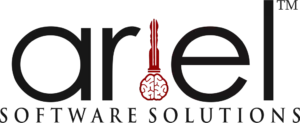Imagine a world where HR isn’t burdened by endless paperwork, manual approvals, and reactive decision-making. Instead, every employee request, compliance check, and performance review flows seamlessly, handled by intelligent systems that understand your business as deeply as your best HR professionals. This isn’t a distant utopia; it’s the power of HR Automation Solutions when fully optimized.
For too long, HR automation has been viewed as a mere convenience – a way to digitize processes and reduce clerical work. But in reality, it holds the potential to redefine workforce management, making HR an active driver of business strategy rather than just a support function. Custom rules and advanced reporting are the twin engines that power this transformation, allowing businesses to move from static automation to truly dynamic, predictive, and intelligent HR ecosystems.
What if your HR Automation Solutions could not only process leaves and payroll but also anticipate workforce trends, prevent attrition, and align talent with business goals? That’s where the magic of HR Automation Solutions lies, and in this blog, we’ll unlock its full potential.
The Power of Custom Rules in HR Automation
Automation is not a one-size-fits-all solution. Every organization has unique workflows, policies, and compliance requirements. Custom rules allow businesses to tailor automation to fit their specific needs, ensuring accuracy and consistency across HR processes.
1. What Are Custom Rules in HR Automation?
Custom rules are pre-defined conditions and workflows set within an HR automation system to handle tasks automatically based on specific triggers. These rules can be applied across various HR functions, including payroll, leave management, recruitment, and compliance tracking.
2. Key Benefits of Custom Rules
- Increased Efficiency: Reduces manual interventions, automating repetitive tasks like timesheet approvals, leave requests, and performance evaluations.
- Compliance and Risk Management: Ensures adherence to labor laws, company policies, and industry regulations by automatically enforcing compliance rules within automated HR systems.
- Personalized Employee Experience: Automates personalized onboarding, benefits enrollment, and career development paths tailored to individual employee needs.
- Data Consistency and Accuracy: Minimizes errors in payroll calculations, attendance tracking, and reporting.
3. Examples of Custom Rules in Action
- Automated Leave Approval: If an employee requests leave, the system can check their leave balance, notify managers, and approve or deny based on pre-set criteria.
- Payroll Adjustments Based on Attendance: Employees working overtime or clocking in late can have automatic payroll adjustments without HR intervention, ensuring that HR software solutions meet organizational standards.
- Performance-Based Incentives: Employees meeting sales targets or achieving specific KPIs can automatically receive bonuses and rewards.
- AI-Driven Recruitment Filtering: The system can screen applicants based on predefined job requirements, qualifications, and experience levels, allowing for faster and more accurate recruitment processes.
4. Industry-Specific Use Cases
- Healthcare: Automating compliance tracking for healthcare workers’ certifications and shift schedules with HR automation solutions.
- IT Sector: Dynamic workforce management, auto-assigning employees to projects based on skill sets.
- Retail: Managing seasonal hiring spikes with automated candidate screening and onboarding.
Advanced HR Reporting: Data-Driven Decision-Making
In an era where data drives business success, HR analytics plays a crucial role in shaping workforce strategies. Basic reporting functionalities often fall short of providing deep insights. Advanced HR reporting harnesses automation, AI, and real-time analytics to deliver actionable intelligence.
1. Why Advanced HR Reporting Matters
HR leaders need more than just attendance reports and payroll summaries. They require insights into workforce trends, employee performance, attrition risks, and diversity metrics. Advanced HR reporting transforms raw data into meaningful narratives that drive informed decision-making.
2. Types of HR Reports That Enhance Business Intelligence
- Predictive Analytics Reports: Forecast future workforce needs, turnover rates, and hiring demands.
- Employee Productivity Reports: Analyze time spent on tasks, project efficiency, and team performance.
- Diversity and Inclusion Reports: Assess hiring trends, gender ratios, and equal opportunity metrics.
- Engagement and Satisfaction Reports: Measure employee sentiment through pulse surveys and feedback analysis.
- Compliance and Audit Reports: Track regulatory adherence, policy violations, and risk management statistics.
3. Leveraging AI and Machine Learning in HR Reporting
Modern HR automation platforms integrate AI and machine learning to uncover patterns and predict workforce trends. These capabilities enable businesses to:
- Identify employees at risk of burnout through sentiment analysis.
- Optimize hiring by analyzing past recruitment success rates.
- Automate workforce planning by forecasting talent gaps.
- Enhance DEI (Diversity, Equity, and Inclusion) efforts with unbiased hiring reports.
- Personalize career path recommendations based on employee skill development.
Best Practices for Implementing HR Automation with Custom Rules and Reporting
While the benefits of HR automation are undeniable, implementation challenges can hinder adoption. Here’s how businesses can ensure a seamless transition:
1. Define Clear Objectives
Identify the key pain points HR automation should address, whether it’s reducing administrative workload, improving compliance, or enhancing employee engagement.
2. Choose the Right HR Automation Platform
Opt for a solution that offers:
- Custom rule configurations
- AI-powered analytics
- Seamless integration with existing HR systems
- User-friendly dashboards
3. Involve Key Stakeholders
HR leaders, IT teams, and department heads must collaborate to define automation workflows that align with business goals.
4. Ensure Data Security and Compliance
Implement role-based access controls, data encryption, and regular compliance audits to protect sensitive HR data within HR automation systems.
5. Train Employees and HR Teams
Provide adequate training to HR personnel to manage automation tools effectively. Educate employees on how automation impacts their workflows.
6. Monitor and Optimize
Continuously track automation performance and tweak rules as needed to adapt to changing business dynamics.
7. Measuring ROI in HR Automation
To justify automation investment, companies should track:
- Time saved on administrative tasks.
- Reduction in compliance-related fines.
- Employee satisfaction and productivity improvements.
- Reduction in attrition rates due to better workforce planning.
The Future of HR Automation: What’s Next?
HR automation is rapidly evolving with emerging technologies such as:
- Blockchain for HR Data Security: Ensures transparency and security in employee records and payroll management.
- Augmented Analytics: Uses AI to generate intelligent insights from HR data.
- Chatbots for Employee Support: Automates routine HR inquiries and improves employee experience.
- Robotic Process Automation (RPA) in HR: Enhances efficiency in handling large-scale HR tasks.
- HR Gamification: Improves engagement through interactive career development strategies.
- AI-Driven Career Pathing: Personalized learning recommendations based on skills and performance trends.
Conclusion: Unleashing the Full Potential of HR Automation

Custom rules and advanced HR reporting are the backbone of a truly intelligent HR automation system. Businesses that leverage these features will not only streamline operations but also gain a strategic advantage in workforce management. By implementing a well-structured HR automation framework, organizations can foster a more productive, compliant, and engaged workforce driving long-term success.
For those interested in improving workforce management even further, don’t miss our previous blog post on “Boosting Workforce Management Systems: The Essential Role of Geolocation & Biometrics in Efficiency” where we discuss the transformative power of geolocation and biometrics in stimulating efficiency. If HR automation is on your mind, you’ll want to learn how these technologies can integrate seamlessly into your systems.
Transform Your HR Operations Today!
Looking to integrate advanced HR automation into your business? Ariel Software Solutions provides cutting-edge, customizable HR automation solutions that empower organizations to work smarter, not harder.
Contact us today to explore how we can help revolutionize your HR processes!








